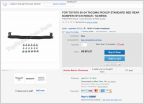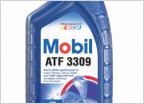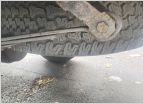-
Welcome to Tacoma World!
You are currently viewing as a guest! To get full-access, you need to register for a FREE account.
As a registered member, you’ll be able to:- Participate in all Tacoma discussion topics
- Communicate privately with other Tacoma owners from around the world
- Post your own photos in our Members Gallery
- Access all special features of the site
EVAP code help
Discussion in '1st Gen. Tacomas (1995-2004)' started by chrskpln, Jul 19, 2022.
Page 2 of 2
Page 2 of 2


 Bolt size
Bolt size 1st gen Tail lights
1st gen Tail lights 1996 Toyota Tacoma 3.4l Automatic Tranmission Fluid. What brand??
1996 Toyota Tacoma 3.4l Automatic Tranmission Fluid. What brand?? Installed front shocks now my truck 2 inches lower in the front
Installed front shocks now my truck 2 inches lower in the front Thoughts on Blue Devil oil leak repair
Thoughts on Blue Devil oil leak repair
